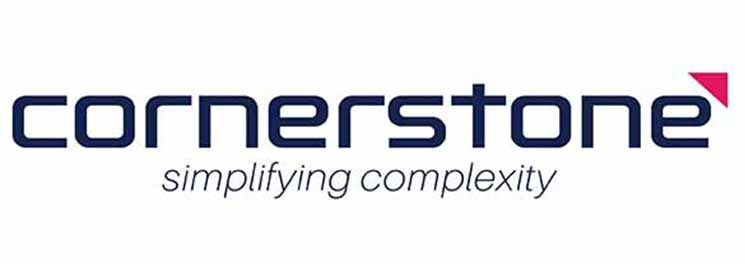
"Small i" Supply Chain Innovation: Focus on the Fundamentals
What does “small “i” innovation look like in practice? Bigger isn’t always better and getting back to basics before embracing innovations like AI could be the best thing for most of us in 2024.
Mention the word innovation and most people are likely to conjure up mental images of cutting-edge technology applications being developed in futuristic research hubs. It’s almost always an expensive picture, and one that is probably incompatible with the realities of life in 2024 with rising inflation, tightening budgets and other economic headwinds being our new normal.
However, that doesn’t have to be the case. If you’re focused on “small i” innovation rather than its “big I” counterpart, there is the real possibility of creating continuous improvement in your operations despite the challenging conditions we’re expecting this year. For example, organisations that have already introduced connected planning tools and integrated planning methodologies can record significant gains by undertaking data-driven review and planning processes.
You can achieve very significant gains in forecast accuracy by capturing and analysing your own data through the use of predictive analytics – essentially, data models that will assess historical sales and financial data, uncover trends and patterns, and use those insights to predict what can and should happen.
And for many organisations with average operational maturity, that may well be enough – at least for now.
Practical “small i”: A case study in going back to basics
Consider the hypothetical example of Company A, which has been a leader in the national retail market for the past two decades. However, in the past 18 months it has been losing market share to competitors. The leadership team of Company A is well aware that the market has been disrupted by high-level drivers, including the pandemic, rising inflation, lower consumer confidence and a tight labour market. All players in the market have been affected by these high-level drivers equally; more detailed analysis is required to understand the unique impact on Company A.
As a first step, Company A undertakes a detailed situational review – a traditional SWOT analysis, taking into account all those disruptive factors outlined above, as well as the activities of their competitors and consumers in the market. The outcome of this exercise is a list of the key factors that are contributing to the loss of market share. These should range from broad in nature (e.g. rising interest rates have decreased discretionary spending in the key audience categories of X and Y) to the specific and granular (Competitor B is running regular targeted promotions to the key audience categories of X and Y).
The second step is to run scenario planning exercises to address these key factors. Leveraging its connected planning platform and historical data, Company A models a range of possible plays in the key audience categories of X and Y – including the regular use of aggressive discounts and promotions to match Competitor B.
Ultimately, the data demonstrates that while Company A would receive a short-term increase in market share through the use of regular promotions, the brand would suffer devaluation in the longer term. Modelling suggests a better solution is a pivot towards audience category Z, which has higher discretionary income and is currently underserved by the market.
Armed with this data, Company A moves to step three – revisit and adjust strategic planning. The company’s work plan is readjusted to include its new focus on audience category Z in the short-term, and as a longer-term play. The executive team is able to harness integrated business planning capabilities to determine the required resourcing, investment and capabilities to service category Z, and also to build the required business cases for any supporting investment initiatives.
Small innovation in your supply chain
While the above example considers the role of “small” innovation in helping to address broad, cross-functional organisational challenges – i.e. loss of market share – there are also opportunities to drive more immediate small innovations in your supply chain.
For example, there are tools available that can help you to take regular “health checks” of your inventory, providing an overall assessment of the inventory health and identifying the items that need review and adjustment.
Such tools can not only help you quickly improve and adjust your inventory management strategy – they will also provide flow-on benefits to the finance department, such as reducing working capital.
What is the link between innovation and AI in 2024?
Finally, it would be remiss of us to discuss innovation in 2024 without at least mentioning artificial intelligence (AI) and other data-driven technologies. If you’re struggling to get your head around the AI conversation, you’re not alone. Most organisations across most industries are yet to uncover the potential applications of these technologies. Thus, for most of us, caution is advised.
While it’s an important discussion to have, we believe that the vast majority of organisations can still claim incremental gains in 2024 (of the “small i” innovation variety) without heavy forward movement on the AI front. Being an early mover makes sense for a small handful of organisations with high maturity or a brand identity that is tethered to being an innovation leader, however it’s a position that also carries a lot of risk, and often limited reward.
Consider whether you will be better served by focusing on the fundamentals in 2024, which will lay the foundations for “big I” innovation when the economic and operational climate is right. That means improving technology enablement, data cleanliness and cloud fundamentals, with a view to enhancing integrated business planning (IBP) processes across the business.
While there may be one or two leaders in your pack who want to move hard and early on AI investment, we encourage you to keep a watching brief on their successes and failures, and be ready to move as a fast follower – with less of the risk, and more of the reward.
We are enablers of change and transformation in Financial Planning and analytics, Information Management, Supply Chain management, Management Consulting, Project Management, and Managed Application Services. Reach out here to have a discussion today or call 1300 841 048.





